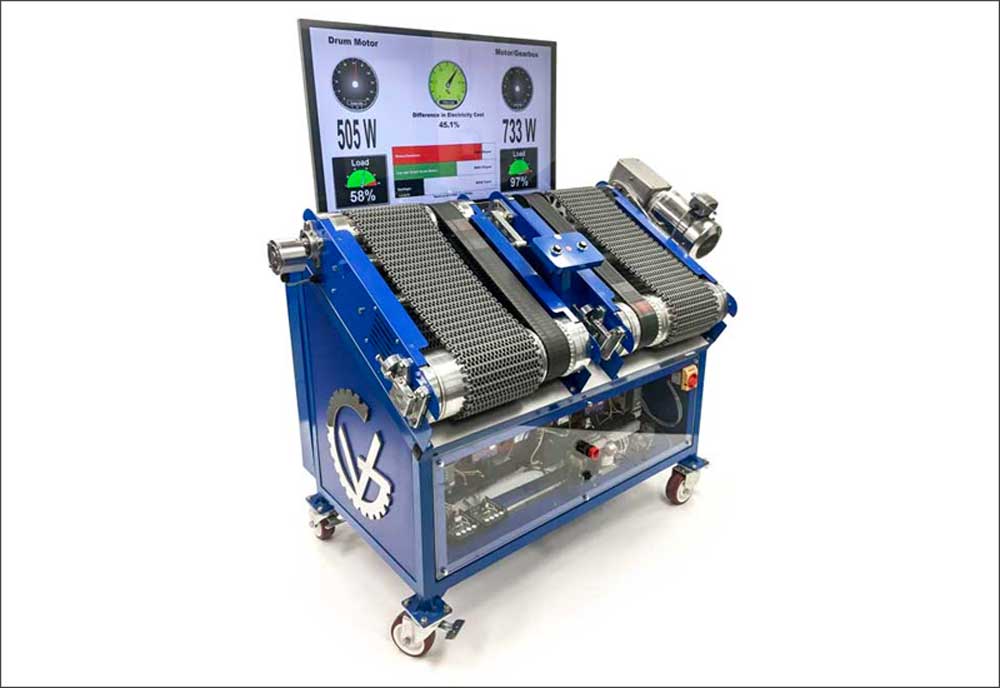
Drum motors improve electrical and mechanical efficiencies
Compared to conventional drive systems, drum motors powering a conveyor will pay for themselves.
PACK EXPO Las Vegas visitors had the opportunity to watch a demonstration of the fundamental differences between powering a belt-conveyor with Van der Graaf’s drum motor versus a conventional drive system.
“Comparison of the external motor and gearbox to that of the drum motor measures the efficiencies, and the electrical savings as a result of the comparison,” explained Rick Zander, business development manager at Van der Graaf. At the Vegas demo, the external motor was mated to a 90-degree gearbox, which was then powered to the conveyor.
According to Alex Kanaris, president of Van der Graaf for US and Canada, the advantage of Van der Graaf’s design is the way the electric motor is coupled to the gearbox. “As you can see, they're inline,” said Kanaris, “so the rotor is inline with the gearbox.” The gearbox has losses, but because it's inline, the only losses are only 2% per stage. “Since this particular gearbox is only a two-stage gear reduction unit, we have a loss of 4%. And that makes our drive 96% mechanically efficient,” Kanaris added.
Zander demonstrated a comparison between the external conventional motor and Van der Graaf’s drum motor in a real-life application on a conveyor belt. To make it a fair comparison, he loaded both drives equally to see how many watts they consume and how much load they experience. As a result, the test unit/system was able to measure the amount of dollars saved by operating a drum motor versus a conventional arrangement.
The drum motor consumed 576-577 watts of power, versus 721 watts on the conventional drive. “This translates into load,” said Zander. “The conventional motor is seeing a 22-23% amount of load. The drum motor is only 12%. This is for the same comparable amount of torque the motor is producing.” In the example, the drum motor costs $612 per year to run versus $755 for the conventional motor and gearbox.
During the demo, Kanaris increased the torque to 125 foot-pounds at 47% load on the conventional motor and gearbox. When he used the same specs on the drum motor, it was using 658-660 versus more than 800 watts of power on the conventional systems. “When we translate that into amount of load, we can see the drum motor is only being loaded at 43%, where the conventional motor is overloaded 100%,” he said. The dollar savings increased from roughly $152 to $162 per year.
Energy savings, longer life, space saving and the safety benefits of less moving parts are associated with Van der Graaf drum motors, concluded Zander.
Read the full article (ProFood World)
View original article